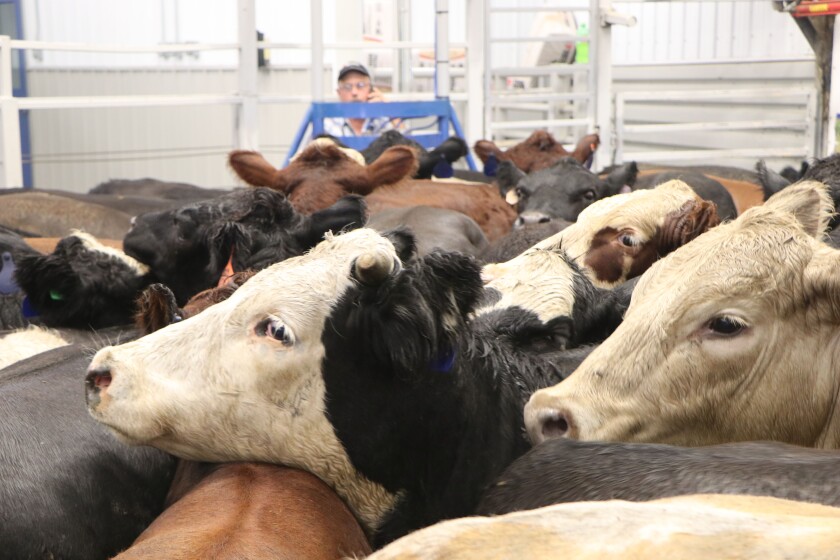Elevate Your Expertise with Bagley Risk Management
Wiki Article
Key Elements to Think About When Deciding On Animals Danger Protection (LRP) Insurance Coverage
When reviewing alternatives for Animals Threat Defense (LRP) insurance policy, a number of crucial factors warrant cautious factor to consider to make sure effective threat management in the farming market. Selecting the ideal insurance coverage choices tailored to your specific animals procedure is vital, as is comprehending exactly how premium prices associate with the level of security offered. In addition, the qualification criteria for various kinds of livestock and the flexibility of the plan to adjust to altering circumstances are important elements to consider. The effectiveness and transparency of the cases process can significantly influence the overall experience and economic results for animals manufacturers. By tactically navigating these critical aspects, producers can secure their investments and alleviate potential threats efficiently.Insurance Coverage Options
When considering Animals Risk Defense (LRP) insurance policy, it is crucial to recognize the different protection options available to reduce dangers in the agricultural industry. Livestock Threat Defense (LRP) insurance coverage provides various protection options customized to satisfy the diverse demands of animals producers.Another essential insurance coverage choice is the recommendation duration, which identifies the size of time the protection is in impact. Manufacturers can choose the endorsement duration that best matches their production cycle and market problems. Furthermore, protection degrees and prices vary based upon the sort of animals being insured, offering producers the flexibility to tailor their insurance policy intends according to their certain requirements.
Recognizing the different insurance coverage options readily available under Livestock Danger Protection (LRP) insurance policy is important for manufacturers to make educated choices that effectively secure their livestock operations from market unpredictabilities.
Premium Prices

Animals Risk Security (LRP) insurance provides essential insurance coverage choices tailored to mitigate threats in the farming industry, with a considerable aspect to take into consideration being the computation and structure of premium prices. These include the type and number of animals being guaranteed, the protection degree selected, the current market rates, historical price information, and the length of the protection period.
Insurers examine historic data on livestock costs and manufacturing prices to determine a proper costs that shows the degree of danger involved. It is vital for animals manufacturers to meticulously evaluate premium costs and protection choices to ensure they are appropriately protected against potential financial losses due to unfavorable market conditions or unexpected events.
Eligible Livestock
The determination of eligible animals for Animals Threat Protection (LRP) insurance coverage entails cautious consideration of specific criteria and features. Animals types that are usually eligible for LRP insurance include feeder livestock, fed swine, cattle, and lambs.Feeder cattle, for example, are typically qualified for LRP visit this site right here coverage if they fall within defined weight arrays. Fed cattle may additionally be eligible, yet they must meet particular weight and quality grade requirements. Swine eligible for protection normally consist of market weight animals meant for slaughter. Lambs are another classification of animals that can be considered for LRP insurance policy, with aspects such as weight and age playing a critical duty in establishing their eligibility.
Before choosing LRP insurance this post for animals, producers must thoroughly assess the qualification criteria described by the insurance coverage company to guarantee their pets satisfy the necessary requirements for protection.
Plan Versatility
Plan adaptability in Livestock Danger Security (LRP) insurance coverage permits producers to tailor protection to suit their details demands and risk management methods. This versatility encourages livestock manufacturers to customize their insurance policy plans based on elements such as the kind of livestock they possess, market conditions, and private risk tolerance levels. By supplying adjustable options, LRP insurance coverage enables producers to successfully handle their danger exposure while securing their livestock procedures versus unexpected market volatility.Insurance Claims Refine
Upon experiencing a loss or damage, producers can start the insurance claims procedure for their Animals Risk Security (LRP) insurance coverage by quickly contacting their insurance policy carrier. It is crucial for producers to report the loss as soon as feasible to expedite the insurance claims procedure. When getting to out to the insurance supplier, manufacturers will need to supply detailed info concerning the event, including the date, nature of the loss, and any kind of pertinent documents such as vet documents or market prices.
After the analysis is complete, the insurance coverage provider will make a decision pertaining to her response the claim and interact the end result to the producer. If the insurance claim is accepted, the manufacturer will get settlement according to the regards to their Animals Risk Defense (LRP) insurance coverage policy. Bagley Risk Management. It is essential for producers to be acquainted with the insurance claims procedure to make certain a smooth experience in case of a loss

Final Thought
Finally, when choosing Livestock Risk Defense (LRP) insurance, it is vital to consider insurance coverage alternatives, premium expenses, qualified animals, plan versatility, and the insurance claims process. These key variables will certainly assist guarantee that farmers and ranchers are appropriately shielded against possible dangers and losses connected with their livestock procedures. Making a notified decision based upon these considerations can ultimately bring about much better financial safety and tranquility of mind for livestock manufacturers.Animals Risk Defense (LRP) insurance coverage offers various coverage alternatives tailored to fulfill the diverse requirements of livestock manufacturers.The decision of qualified livestock for Animals Danger Defense (LRP) insurance protection includes mindful consideration of details requirements and features.Policy adaptability in Livestock Threat Protection (LRP) insurance policy allows manufacturers to tailor protection to suit their certain demands and run the risk of administration strategies.Upon experiencing a loss or damage, manufacturers can initiate the cases procedure for their Livestock Danger Protection (LRP) insurance coverage by quickly contacting their insurance service provider.In conclusion, when picking Livestock Danger Defense (LRP) insurance, it is necessary to take into consideration protection alternatives, premium costs, eligible livestock, plan versatility, and the cases procedure.
Report this wiki page